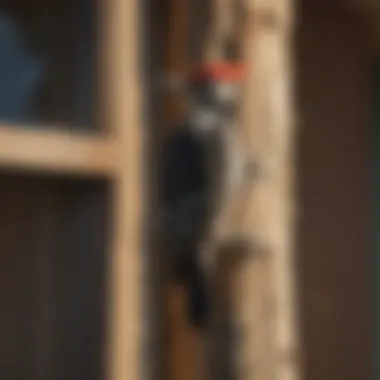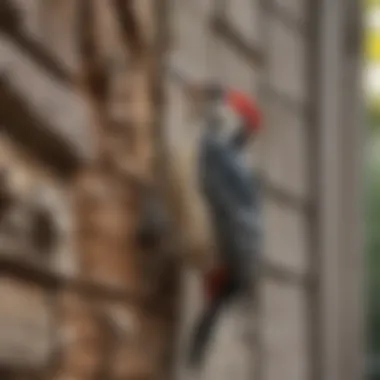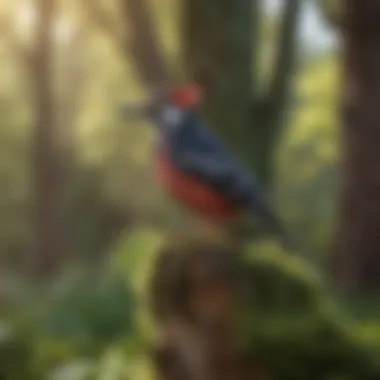Effective Strategies to Keep Woodpeckers Away


Intro
Woodpeckers are remarkable creatures known for their unique behaviors and drumming sounds. However, their presence around homes can become a problematic issue. Understanding why these birds are drawn to residential areas is key to developing effective strategies for repelling them.
This article delves into the various approaches homeowners can take to protect their properties from the potential damage that woodpeckers can inflict. By exploring both natural and commercial solutions, this guide equips readers with the knowledge they need to safeguard their homes without causing harm to wildlife.
Pest Identification
Detailed Descriptions of Common Woodpeckers


Woodpeckers are often identified by their strong, pointed beaks and their distinctive drumming sounds. In North America, several species are commonly found. The Downy Woodpecker, for example, has a smaller size with a black-and-white patterned body. The Hairy Woodpecker is larger and features a similar pattern but is distinguishable by its size and a longer bill. The Northern Flicker, on the other hand, has a more unique appearance with a brown body and black spots.
Signs and Symptoms of Infestations
Homeowners might notice signs of woodpecker activity, including:
- Damaged siding: Woodpeckers often peck at wood to create nesting sites or search for insects.
- Holes in trees: These birds may also cause damage to nearby trees, weakening their structure.
- Drumming sounds: The rhythmic pounding can be a clear indication of their presence, especially during mating seasons.
- Shavings on the ground: Small wood chips or shavings beneath trees or on the ground can indicate where woodpeckers are actively feeding or nesting.
Prevention Strategies


Home Maintenance Tips for Pest Prevention
Preventing woodpecker damage begins with regular home maintenance. Here are a few effective strategies:
- Regular inspections: Check your home’s exterior for any cracks or holes that could attract woodpeckers.
- Repair damages promptly: Wooden structures should be repaired as soon as signs of damage appear.
- Use protective materials: Installing metal sheeting or plastic barriers over vulnerable areas can deter woodpeckers from pecking at siding or trim.
Natural Deterrents and Barriers
Natural deterrents can be effective in keeping woodpeckers at bay. Some common options include:


- Reflective surfaces: Hanging shiny objects or reflective tape can confuse woodpeckers and discourage them from approaching.
- Scare devices: Items like predatory bird silhouettes can create an illusion of danger.
- Sound deterrents: Using noises, such as recordings of predator calls, may help keep woodpeckers away.
Treatment Options
Overview of Chemical vs. Natural Treatments
When it comes to treatment, options vary. Chemical repellents are available, but they may have environmental implications. On the other hand, natural treatments promote humane solutions.
Step-by-Step Guides for DIY Treatments
One effective natural treatment is preparing a mixture of water and cayenne pepper. Simply combine:
- 2 cups of water
- 2 tablespoons of cayenne pepper



